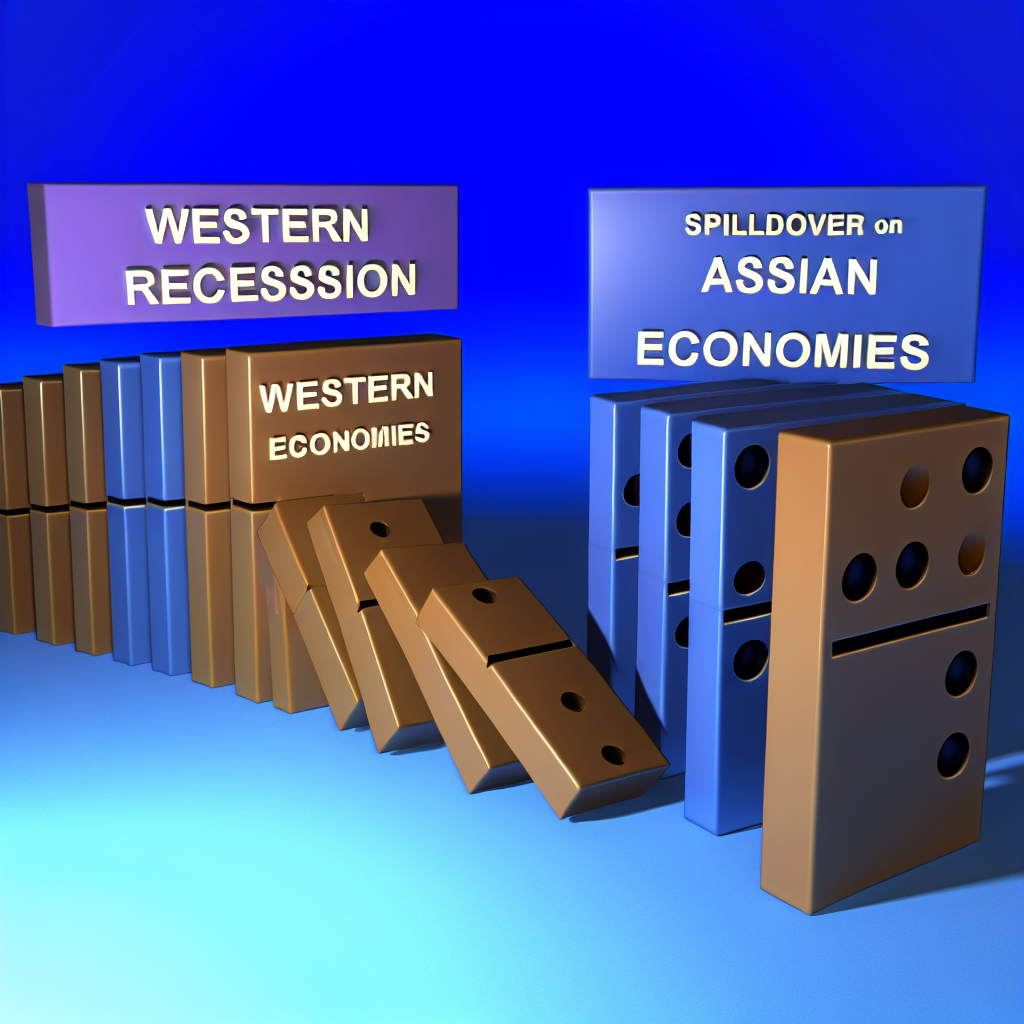The Western Recession Risk: Preparing Asian Economies for Potential Spillovers

As the global economy becomes increasingly interconnected, the repercussions of economic downturns in one region can have far-reaching effects on others. The potential for a recession in Western economies, particularly in the United States and Europe, poses significant risks for Asian economies. This article explores the implications of a Western recession, the channels through which spillovers may occur, and strategies that Asian economies can adopt to mitigate these risks.
Understanding the Western Recession Risk
The risk of a recession in Western economies is influenced by various factors, including inflation rates, interest rates, and geopolitical tensions. Recent trends indicate that central banks in the West are tightening monetary policies to combat inflation, which could lead to reduced consumer spending and investment. For instance, the Federal Reserve’s aggressive interest rate hikes have raised concerns about a potential slowdown in economic growth.
- Inflationary Pressures: High inflation rates can erode purchasing power, leading to decreased consumer confidence.
- Interest Rate Hikes: Increased borrowing costs can stifle business investments and consumer spending.
- Geopolitical Tensions: Ongoing conflicts and trade disputes can disrupt supply chains and economic stability.
Channels of Spillover to Asian Economies
Asian economies are particularly vulnerable to spillovers from a Western recession through several channels:
- Trade Links: Many Asian countries rely heavily on exports to Western markets. A slowdown in demand can lead to reduced exports, impacting economic growth.
- Investment Flows: Western investors may withdraw capital from Asian markets during a recession, leading to decreased foreign direct investment (FDI).
- Financial Markets: Global financial markets are interconnected; a downturn in Western stock markets can lead to volatility in Asian markets.
For example, during the 2008 financial crisis, countries like South Korea and Taiwan experienced significant declines in exports to the U.S. and Europe, which contributed to their economic contractions. According to the Asian Development Bank, a 1% decline in U.S. GDP can lead to a 0.5% decline in GDP for many Asian economies.
Case Studies: Lessons from Past Recessions
Examining past recessions provides valuable insights into how Asian economies can prepare for potential spillovers:
- 2008 Global Financial Crisis: Countries like China implemented stimulus packages to boost domestic demand, which helped cushion the impact of reduced exports.
- COVID-19 Pandemic: Southeast Asian nations focused on diversifying their economies and enhancing digital infrastructure to adapt to changing global conditions.
These examples highlight the importance of proactive measures in mitigating the effects of external shocks. By learning from past experiences, Asian economies can develop more resilient economic structures.
Strategies for Mitigating Spillover Risks
To prepare for potential spillovers from a Western recession, Asian economies can adopt several strategies:
- Diversification of Trade Partners: Reducing reliance on Western markets by exploring new trade agreements with emerging economies can help stabilize exports.
- Strengthening Domestic Demand: Policies aimed at boosting consumer spending and investment can help offset declines in external demand.
- Enhancing Financial Resilience: Building robust financial systems and maintaining adequate foreign exchange reserves can provide a buffer against capital flight.
For instance, Vietnam has been actively pursuing trade agreements with countries in Asia and beyond, which has helped it reduce its dependence on Western markets and maintain steady economic growth even during global downturns.
Conclusion
The risk of a Western recession presents significant challenges for Asian economies, but with careful planning and strategic measures, these nations can mitigate potential spillovers. By diversifying trade partners, strengthening domestic demand, and enhancing financial resilience, Asian economies can better navigate the uncertainties of the global economic landscape. As history has shown, proactive measures can make a substantial difference in weathering economic storms, ensuring that Asian economies remain robust and competitive in an ever-changing world.





